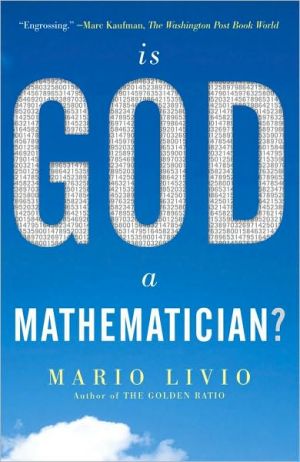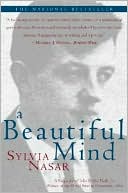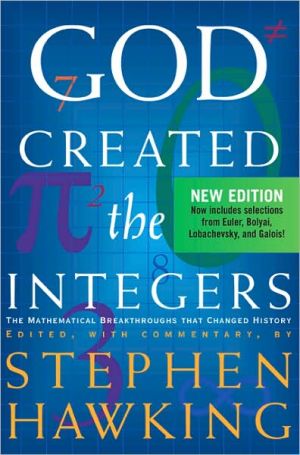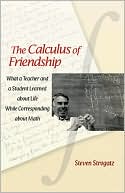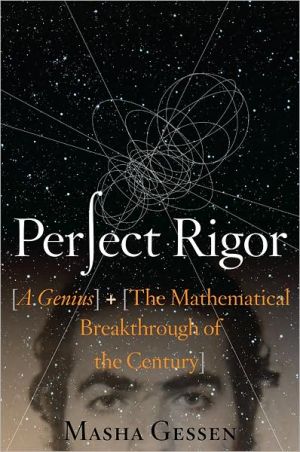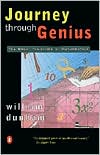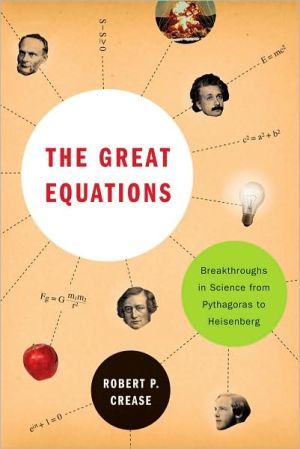Notable Women in Mathematics: A Biographical Dictionary
This volume features substantive biographical essays on 59 women from around the world who have made significant contributions to mathematics from antiquity to the present. Designed for secondary school students and the general public, each profile describes major life events, obstacles faced and overcome, educational and career milestones—including a discussion of mathematical research in non-technical terms—and interests outside of 2 promotics. Although the collection includes historical...
Search in google:
Substantive biographical essays on 59 women mathematicians from around the world who have made significant contributions to mathematics from antiquity to the present. VOYA Morrow and Perl have brought together fifty-nine women from around the world, assorted backgrounds, and various eras who share a love and zest for mathematics. These women have achieved some of the highest honors in mathematics, such as the MacArthur "Genius" fellowships and appointments to the National Academy of Sciences, while often defying the odds and breaking beyond barriers. Readers are introduced to each woman's childhood experiences with mathematics and science and how she was given opportunities to nurture this interest. Each woman has had more than one significant mentor who helped her explore her mathematical curiosity. Some, such as Sophie Germain, a French mathematician born in 1776, had to hide their mathematical interests until given the proper opportunity. Germain secretly studied mathematics at night because her family believed it an improper thing for women to do. Eventually her parents relented, and Germain was allowed to attend a university and study math. Perseverance is a key component to many of these women's successes. Mary Gray, now a professor of mathematics at American University in Washington, D.C., was asked by her first graduate course instructor, "What are you doing here? Why don't you stay home and take care of kids?" She excelled in her graduate studies and went on to be the founding president of the Association of Women in Mathematics and constantly challenges gender issues in the mathematical community. These two women are just a few examples of the successful mathematicians included in this reference book. The book stays away from rigorous mathematical definitions and concepts, but when necessary will provide a general example or description of the particular mathematical field. The editors chose to include women from all time periods, although they do focus more on contemporary mathematicians. For the reader who is interested in learning more about these women and their work, additional references, both academic and bibliographical, are provided. Index. Illus. Photos. Source Notes. Further Reading. Appendix.
IntroductionMaria Gaetana Agnesi1Andrea Bertozzi6Lenore Blum11Sylvia Bozeman17Marjorie Lee Browne21Leone Burton25Fan King Chung29Ingrid Daubechies34Emilie de Breteuil du Chatelet38Etta Zuber Falconer43Joan Feigenbaum47Elizabeth Fennema51Herta Taussig Freitag56Sophie Germain62Evelyn Boyd Granville66Mary Gray71Gloria Conyers Hewitt76Grace Brewster Murray Hopper80Rhonda Hughes85Joan Hutchinson90Hypatia94Nancy Kopell98Sofya Korvin-Krukovskaya Kovalevskaya102Christine Ladd-Franklin107Anneli Lax113Gilah Chaya Vanderhoek Leder118Emma Trolskaya Lehmer123Ada Augusta Byron Lovelace128Vivienne Malone-Mayes133Dusa Waddington McDuff137Marie-Louise Michelsohn142Cathleen Synge Morawetz147Emmy Noether152Karen Parshall157Bernadette Perrin-Riou161Harriet Pollatsek164Cheryl Praeger169Mina Spiegel Rees174Ida Rhodes180Julia Bowman Robinson185Judith Roitman190Mary Ellen Rudin195Mary Beth Ruskai200Cora Sadosky204Alice Turner Schafer209Doris Wood Schattschneider214Charlotte Angas Scott219Marjorie Wikler Senechal225Lesley Milman Sibner229Mary Fairfax Grieg Somerville233Pauline Sperry238Alicia Boole Stott242Olga Taussky-Todd246Jean Taylor252Chuu-Lian Terng257Karen Uhlenbeck261Marion Walter267Sylvia Young Wiegand272Grace Chisholm Young277App. IDates of Birth283App. IICountries of Employment and Origin285Index289About the Editors and Contributors295
\ VOYA - Joyce Yen\ Morrow and Perl have brought together fifty-nine women from around the world, assorted backgrounds, and various eras who share a love and zest for mathematics. These women have achieved some of the highest honors in mathematics, such as the MacArthur "Genius" fellowships and appointments to the National Academy of Sciences, while often defying the odds and breaking beyond barriers. Readers are introduced to each woman's childhood experiences with mathematics and science and how she was given opportunities to nurture this interest. Each woman has had more than one significant mentor who helped her explore her mathematical curiosity. Some, such as Sophie Germain, a French mathematician born in 1776, had to hide their mathematical interests until given the proper opportunity. Germain secretly studied mathematics at night because her family believed it an improper thing for women to do. Eventually her parents relented, and Germain was allowed to attend a university and study math. Perseverance is a key component to many of these women's successes. Mary Gray, now a professor of mathematics at American University in Washington, D.C., was asked by her first graduate course instructor, "What are you doing here? Why don't you stay home and take care of kids?" She excelled in her graduate studies and went on to be the founding president of the Association of Women in Mathematics and constantly challenges gender issues in the mathematical community. These two women are just a few examples of the successful mathematicians included in this reference book. The book stays away from rigorous mathematical definitions and concepts, but when necessary will provide a general example or description of the particular mathematical field. The editors chose to include women from all time periods, although they do focus more on contemporary mathematicians. For the reader who is interested in learning more about these women and their work, additional references, both academic and bibliographical, are provided. Index. Illus. Photos. Source Notes. Further Reading. Appendix.\ \ \ \ \ Library JournalIt is a rare high school girl who will be inspired to study mathematics by reading any of these 59 histories of discrimination and discouragement and learning, for instance, that Julia Robinson didn't mind being the only girl in a room full of boys because "mostly they paid no attention to her unless they needed help with homework." This dictionary contains signed articles with references to works by and about the subject, written by women mathematicians and educators. Indexes list dates of birth and countries of origin and employment. Most of the women profiled are living, currently active academic mathematicians, and several were interviewed especially for this dictionary. Six of these same women were also among those interviewed for Claudia Henrion's Women in Mathematics (Indiana Univ., 1997), which addresses the question of why even the most successful women mathematicians continue to feel like outsiders in the mathematical community. In writing for a high school/general audience, the contributors have had to tackle the "devilishly difficult task" of describing mathematical achievements to non-mathematicians. It seems a bit too bad that the focus on academic mathematicians excludes such women as Constance Reid (recently awarded the 1998 Communications Award for mathematics) or Sheila Tobias (famous for studies of math anxiety), whose contributions might seem more accessible to young women. Notable Mathematicians (Gale, 1997) has a good selection of famous historical female mathematicians and may be sufficient for the needs of many libraries. However, this dictionary introduces us to the mathematical achievements of many less-famous women, and the biographies of modern lives are less remote from the experience of modern people. For public and academic libraries.--Amy Brunvand, Univ. of Utah Lib., Salt Lake City\ \ \ School Library JournalGr 9 Up-This book features five-to-six page profiles of 59 mathematicians and scientific computing researchers from around the world. Each profile describes the woman's major life events and educational and career milestones, includes a discussion of her areas of mathematical research in nontechnical terms, and lists works by and about that person. All entries have an accompanying black-and-white photograph. The majority of essays are based on interviews by the authors. Appendixes give listings of dates of birth and countries of employment and origin and the subject index provides easy access. Notable Mathematicians: From Ancient Times to the Present (Gale, 1998) profiles 23 of the same women. When comparing the two profiles of Karen Uhlenbeck, readers will find that Notable Women presents more information regarding her elementary school experiences, college choices, and difficulties in finding a first tenure-track position and mentors. Morrow and Perl's book also includes three profiles of African-American mathematicians, one Latina profile, and one Asian profile not found in the Gale book.-P. A. Dolan, Illinois State University, Normal\ \ \ \ \ BooknewsPresents substantive biographical essays on 59 women from around the world who have made significant contributions to mathematics. Although the collection includes historical women, the emphasis is on contemporary mathematicians. Designed for secondary school students and the general public, each profile describes major life events, obstacles faced and overcome, educational and career milestones (including a discussion of mathematical research in non- technical terms), and outside interests. Annotation c. by Book News, Inc., Portland, Or.\ \


